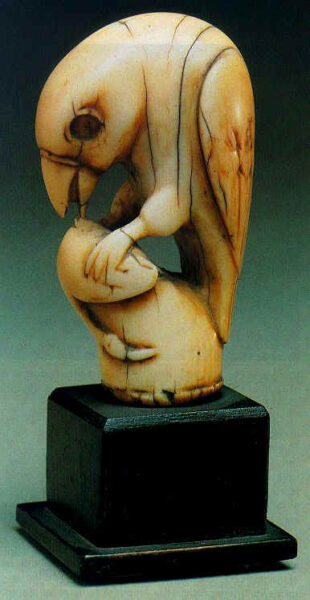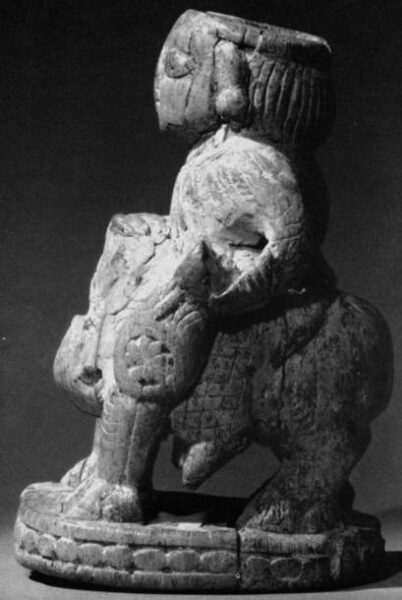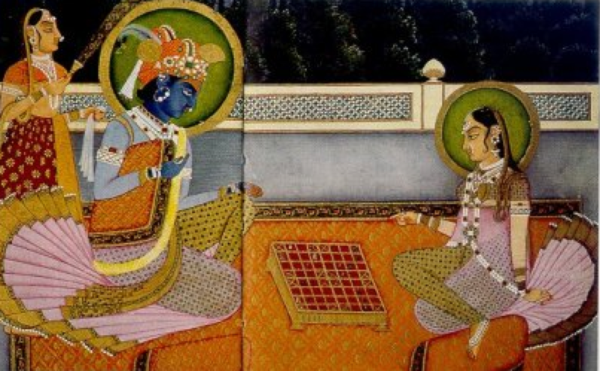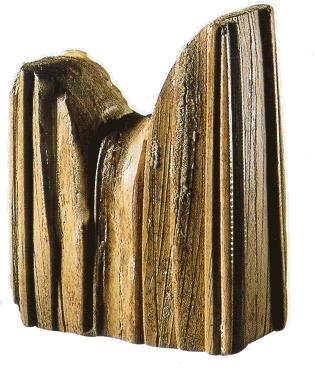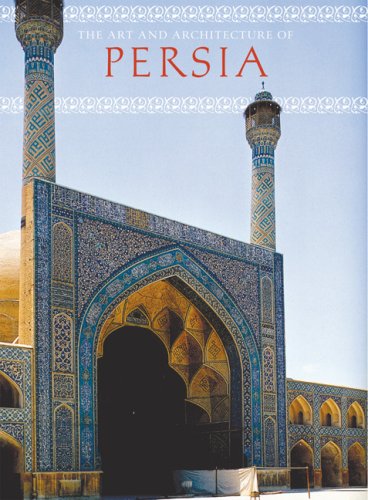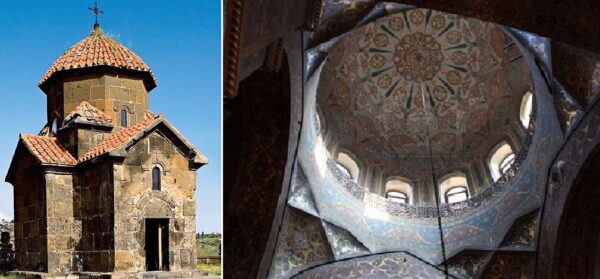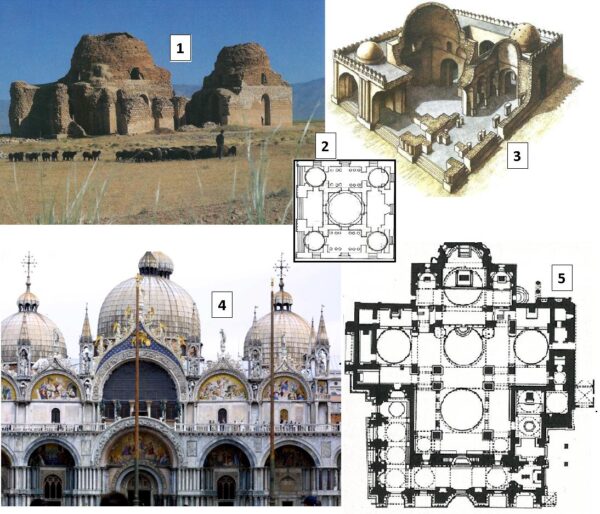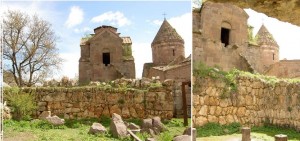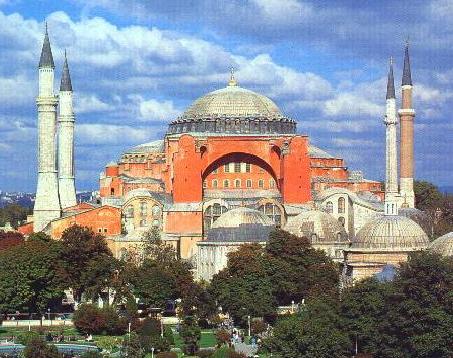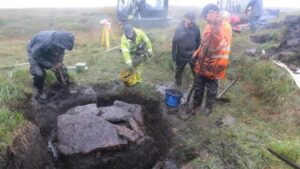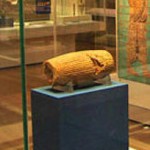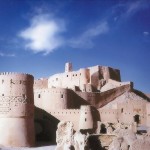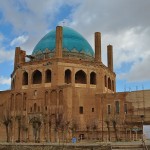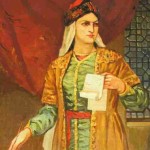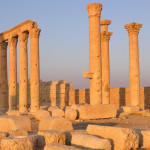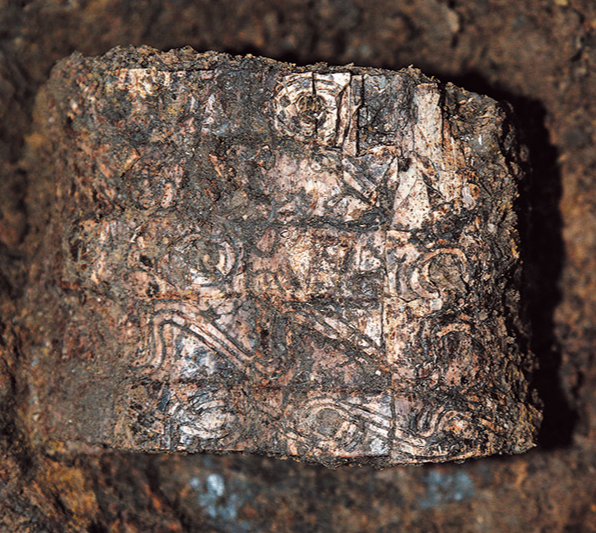 YONGCHENG, CHINA—Xinhua reports that a 5,000-year-old royal tomb of the Dawenkou Culture has been unearthed in central China’s Wangzhuang ruins, which have been dated to between 4000 and 2600 B.C. “The latest discovery indicates that the Wangzhuang ruins are not an ordinary settlement but rather, the capital of a prehistoric kingdom,” said Zhu Guanghua of Capital Normal University. The large tomb contained inner and outer coffins thought to have held the remains of a king, he added. More than 100 pottery vessels, some 200 jade ornaments, bone tools, and animal remains were also recovered. The burial was badly damaged in antiquity, however. “Most of the tomb owner’s skeletal remains within the wooden coffin are missing, with only a few toe bones left,” Zhu explained. “Small jade ornaments were scattered inside and outside the coffin and many stone ceremonial blades were deliberately broken,” he said. Researcher Li Xinwei of the Chinese Academy of Social Sciences concluded that the artifacts from Wangzhuang show that the residents were influenced by other cultures living in the Yangtze River Basin, and eastern and central China.
YONGCHENG, CHINA—Xinhua reports that a 5,000-year-old royal tomb of the Dawenkou Culture has been unearthed in central China’s Wangzhuang ruins, which have been dated to between 4000 and 2600 B.C. “The latest discovery indicates that the Wangzhuang ruins are not an ordinary settlement but rather, the capital of a prehistoric kingdom,” said Zhu Guanghua of Capital Normal University. The large tomb contained inner and outer coffins thought to have held the remains of a king, he added. More than 100 pottery vessels, some 200 jade ornaments, bone tools, and animal remains were also recovered. The burial was badly damaged in antiquity, however. “Most of the tomb owner’s skeletal remains within the wooden coffin are missing, with only a few toe bones left,” Zhu explained. “Small jade ornaments were scattered inside and outside the coffin and many stone ceremonial blades were deliberately broken,” he said. Researcher Li Xinwei of the Chinese Academy of Social Sciences concluded that the artifacts from Wangzhuang show that the residents were influenced by other cultures living in the Yangtze River Basin, and eastern and central China.
Powerful Maya Serpent Dynasty Revealed in Reliefs in Mexico
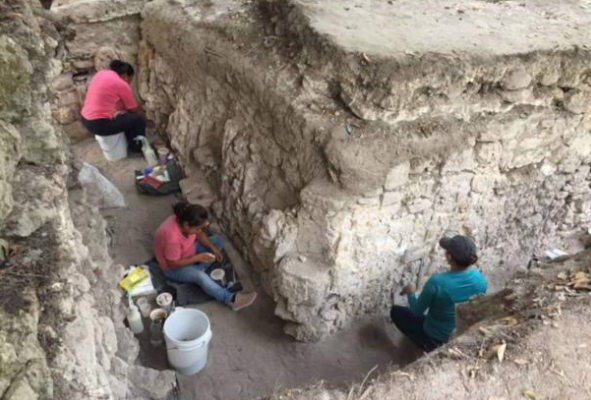 Archaeologists in the Archaeological Zone of Dzibanché, Mexico, have unearthed three ancient relief facades depicting motifs tied to the powerful Kaanu’l dynasty, a ruling Maya lineage represented by the serpent symbol ( kaan in Mayan). These newly uncovered reliefs, located in structures near Ball Game II in Dzibanché, date back to the Early Classic period (AD 500-600) and depict symbols of power and ancestry, reinforcing Dzibanché’s role as an influential seat of the Kaanu’l lineage.
Archaeologists in the Archaeological Zone of Dzibanché, Mexico, have unearthed three ancient relief facades depicting motifs tied to the powerful Kaanu’l dynasty, a ruling Maya lineage represented by the serpent symbol ( kaan in Mayan). These newly uncovered reliefs, located in structures near Ball Game II in Dzibanché, date back to the Early Classic period (AD 500-600) and depict symbols of power and ancestry, reinforcing Dzibanché’s role as an influential seat of the Kaanu’l lineage.
Archaeologists discover 12 skeletons at a buried tomb in Petra, Jordan
By James Doubek
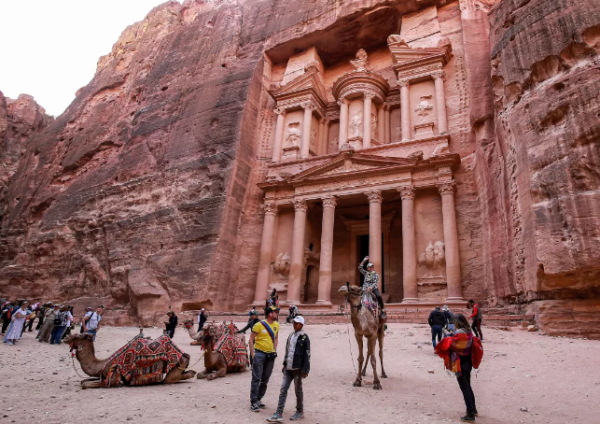 Archaeologists say they’ve made a remarkable discovery in a place already known for its rich ancient history: 12 full skeletons in a tomb beneath one of Jordan’s biggest tourist attractions.
Archaeologists say they’ve made a remarkable discovery in a place already known for its rich ancient history: 12 full skeletons in a tomb beneath one of Jordan’s biggest tourist attractions.
The remains were found beneath the Treasury, also called Al Khazneh, in the ancient city of Petra — famous as a landmark seen in the movie Indiana Jones and the Last Crusade.
The Treasury, believed to be a mausoleum, was carved by the Nabataean people around 2,000 years ago. Petra was the capital of the Nabataeans, who carved many elaborate structures out of rose-colored rock. The city is now a UNESCO World Heritage site.
Richard Bates, a professor of geophysics at the University of St Andrews in Scotland who was part of the archaeological team, said the discovery will help researchers learn more about the ancient people.
“If you look at all the other tombs in the Petra area, only a few have ever contained any human remains, and those are very fragmentary, whereas this has got 12 complete bodies within it,” he told NPR.
Bates said the discovery not only sheds light on the rituals involved in Nabataean birth and death practices, but also, “by analyzing the skeleton material, the teeth, the bones, we can tell things about their lifestyle. So it’s going to unlock a view on Nabataean life that we’ve just never had access to before.”
A local archaeological team obtained the rare permission to get inside the Treasury building. Bates ran ground-penetrating radar as part of the team. “That’s when we discovered the signals which I interpreted as voids in the subsurface,” he said.
The new chamber is about 18 feet by 18 feet and 9 feet tall, he estimates, and preliminary dating puts it from around the first century B.C. to the first century A.D., in the middle of the Nabataean Kingdom. The civilization existed from roughly the 4th century B.C. until it was annexed by the Romans in 106 A.D.
Archaeologists had already discovered indications of this tomb around 2003, but the dig site was shut down over lack of funding at the time, Bates said. Separate tombs were discovered at the Treasury in 2004, according to Petra’s tourism authority, which says they were royal tombs.
The tomb’s discovery happened over the summer but is now being publicized as part of the show Expedition Unknown on the Discovery Channel.
In a coincidence, the crew also found that one skeleton was holding a ceramic vessel similar to a famous chalice seen in the Indiana Jones movie.
Chess: Iranian or Indian Invention?
The article below has been edited by Shapour Suren-Pahlav of the CAIS website in London. As noted by Suren-Pahlav: “Large portion of this essay has been excerpted from “The Origin of Chess; Some Facts to Think About” by Ricardo Calvo, 1996.”
============================
The Origin of Chess
Chess is one of humanities popular pastimes and has been described not only as a game, but also as an art, a science and a sport. Chess is sometimes seen as an abstract war-game and a ‘mental martial art. And teaching and playing chess have been advocated as a way of enhancing mental prowess.
Seven piece ivory set (7th century CE) (Source: CAIS).
It is very unlikely that Chess, almost as it is played today suddenly came into existence or invented by one person. The idea of it being a combination of elements from other board-games has merit. Since almost all known board games have religious backgrounds the astrological component is entirely possible, even though one prefers the version that all elements come from other games, as the basis for the counters. Iran as the area of origin is highly possible, especially because of the two excavated debated pieces from the second century CE, which were found in the area of Iranian cultural domination.
However:
“chess is an ancient game which is first mentioned in documents dating back to the early years of the 7th century CE. and associated with North West India and Iran. Before the 7th century the existence of chess in any land is not demonstrable by a single shred of contemporary evidence” (Fiske, the Nation).
Claiming the glory
Various scholars have proposed various origins for chess: Bidev states that “chess comes from China”, while Samsin suggests that there was hybridisation of Eastern and Western games in the post Alexander kingdom of Bactria in c180-50BCE. Josten is geographically between the two of them, favoring the Kushan empire in ca. 50BCE – 200CE.
A Knight chess-piece (7th c. CE) from Afrasiab (Source: CAIS).
However, possibly the strongest – or perhaps most vociferous – arguments have come from those who consider that chess originated in the Indian subcontinent in around 600CE. This view was propagated by Murray and van der Linde in the late 19th – early 20th centuries, and has subsequently been supported by Averbak.
This brief paper examines some etymological, literary and archaeological evidence for the Iranian origin of chess – and so suggests that the question of the origin of the famous game is still unanswered.
Etymological evidence
Various names have been, and are now, used for chess-like games. Indian Chaturanga, for example, is a chess-like game, but it is played on an eight by eight board (rather than the modern chess twelve by twelve board) and it uses slightly different pieces and rules to those in the modern game. It has been suggested to be a proto-game for chess, of Indian origin.
The word chaturanga means ‘quadripartite’ or ‘army’ which reflects the four components in Vedic army platoons, which are themselves reflected in the types of pieces used in the game. Ricardo Calvo notes that the first unmistakable reference to the game of chaturanga is in the Harschascharita by the court poet Bina, writing between 625 and 640CE. The word’s early literary use and its origin in the ancient language of Sanskrit have been suggested to provide supporting evidence for the Indian origin of chess. Murray specifically suggested that the Sasanian-Pahlavi word chatrang – used for a game equivalent to the current chess – was derived from chaturanga. However, one of the most etymological evidences can be identified in the terminology of chess pieces which are Persian such as Rook.
Rook which is a Western derivative of Rukh is another term for Iranian mythical bird Sên-Murv, and Simurgh in New Persian. In ancient Iranian literature (Avestan) Sên-Murv identified as Homâ and in Arabic introduced as Rukh. The Simurgh or Rukh, was depicted as a winged gigantic creature in the shape of a bird, that could carry an elephant or a camel. The functionality of the Rook piece in game of chess and its iconography in Iranian world is quite significant. The bird which Iranian believed imparted fertility to the land and the union between the earth and the sky. In India, the piece is more popularly called haathi, meaning “elephant“.
Rukh piece found in Ferghana 8th to 10th centuries CE (Source: CAIS).
Another hint is the nomenclature of the pieces, persistently related to different sorts of animals rather than to components of an army: In the “Grande Acedrex” of King Alfonso of Castile (1283) lions, crocodiles, giraffes etc. play over a board of 12×12 cases with peculiar jumping moves, and the invention of it is connected to the same remote period in India as normal chess. They are very atypical in any context referring to India (see De Gruyter in bibliography).
Other chess terminologies are also deeply rooted in Persian language, such as “checkmate” (the English rendition of shāh māt, which is Persian for “the king is frozen“) as well as “bishop” and “queen” pieces.
“Bishop” chess piece which is a western innovation, derived from the elephant, most likely in the 15th century – it is from the Persian pīl meaning “the elephant”. In Europe and the western part of the Islamic world people knew little or nothing about elephants, and the name of the chessman entered Western Europe as Latin alfinus and similar, a word with no other meaning.
Vazir (Bishop), found in Saqqizabad, Iran 7th to 8th centuries CE (Source: CAIS).
This word “alfil” is in fact is an Arabic loanword from Persian pīl < fil , and in turn the Spanish word alfil would most certainly have been taken from Arabic. Chess was introduced into Spain by Ali ibn-Nafi the famous Persian poet, musician and singer (also known as Zaryāb or Ziryab, “gold finder”) in the 9th century – it is described in a famous Libro de los juegos the 13th century manuscript covering chess, backgammon, and dice
Elephant in carved dolomite-stone circa 7th century CE (Source: CAIS).
Some argue that since one of the pieces are being referred to as “elephant”, must of an Indian origin – on the other hand, elephants are not at all exclusive to India (Gowers, p.173 ff; Walbank, p. 205-6.). However, Iranians were the first nation that introduced cavalry and they had also foot-soldiers, chariots and elephants as well as river and battle-ships. In Egypt, the Ptolemaic Kings obtained elephants regularly from Somalia. Strabo (16,4,5) mentions the foundation of several cities in Africa with the main purpose of hunting elephants (Gowers, p.173 ff; Walbank, p. 205-6.). The English name “bishop” is a rename inspired by the conventional shape of the piece.
An Indian manuscript depicting Krishna and Radha playing chaturanga on an 8×8 Ashtāpada (Source: CAIS).
The chess piece known as “queen” is (Persian) farzīn also vizier. It became (Arabic) firzān, which entered western European languages as forms such as alfferza, fers, etc – then later it was replaced by “queen” – possibly brought to West by British during the British rule of India; the Indian equivalent of “queen” is rani.
Historical and Literary Evidence
Pre-Islamic written references to Chess or its development have all point out to it Iranian origin, in particular to two Persian records of about 600CE. These documents have solidly connected chess with the last period of the Sasanian rulers in Iran (224-651 CE).
The “Karnamak-ī Ardeshīr-ī Pāpakān” (the Book of Deeds of Ardeshir-e Pāpakān), a treatise about the founder of Sasanian dynasty, mentions the game of “chatrang” as one of the cultural accomplishments of the Ardeshir as a young prince. It has a proving force that a game under this name was popular in the period of redaction of the text, supposedly during the reign of Khosrow II, Parviz (r. 590-628 CE) – the work could have been composed as early as 260 CE.
The third and final Pahlavi text is known as Khūsraw ud Rēdag (Khosrow and the Page). It mentiones together with other games in chapter 15 of the (ud pad Čatrang ud new-ardaxšî r ud haštpay kardan az hamahlan fraztar hom “and in playing Chess, backgammon and the hashtpay, I am superior to my comrades” (Unvala, p. 16; Monchi-Zadeh, 1982, p. 65; Panaino, 1999, p. 51). It seems the story was taken place at the court of Khosrow I, Anūshakrūwān (Immortal Soul – r. 488–531 CE) and states that chess is one of the cultural disciplines that a noble should learn.
Chess pieces found at Afrasiab, ivory 7th-8th centuries CE (Source: CAIS).
Ferdowsi the greatest of Iranian epic-poets wrote also about it in the 10th century, but his sources are solid and form a continuous chain of witnesses going back to the middle of the 6th Century in Iran. He describes chess as arriving from Hind. According to Iranian historical sources this name “Hind” was not used for India until after the 11th century. Here “Hind” means Eastern-Province of Iranian Empire including modern Sistan va Baluchestan province, and while during the Achaemenid dynastic era it was extended to Khuzestan province.
As Bidev, the Russian chess historian pointed out, nobody could possibly generate the rules of chess only by studying the array position at the beginning of a game. On the other hand, such an achievement might be made by looking at Takht-ī Nard (backgammon), which is another Iranian game-invention – the use of dice also favors its Iranian origin. The world oldest pair of dice was discovered in Dahān-e Gholāmān located in in southeastern Iranian province of Sistan, which date back to the Achaemenid dynastic period or possibly even earlier (see below).
Ancient dices discovered at the Burnt-City. At present experts are (a) attempting to determine why the game was played with sixty pieces and (b) working to decode the rules of the game. Iranians call Backgammon “Takht-e Nard”. For more see here…
Archaeological Evidence
The oldest clearly recognisable chessmen have been excavated in ancient Afrasiyab (ancient Samarqand), in Iranian cultural domains contrasts with the absence of such items in India. Afrasiab was under thy Islamic rule since 712, but were essential a Persianate land and society by origin. Some other old pieces, possibly Chess pieces, are the occasionally named chess pieces of an elephant and a zebu bull kept in Tashkent. They were excavated in 1972 at Dalverzin-Tepe (see figure below following this paragraph), an ancient citadel nowadays in Southern Uzbekistan, and stem from the 2nd century. The Russian Chess history expert Linder feels that they are not Chess pieces, but belonged to a forerunner of Chess. They could mean an earlier than previously assumed existence of Chess.
Elephant and Bull (or Knight or Vizier ?), ivory , dated as early as 2nd c., found at Dalverzin-Tepe. Their use is unknown, some scholars think they can be game pieces (Source: CAIS).
However, there are no chessmen there from early times in India, and only in the 10th century appears an indirect mention from Mas’udi: “The use of ivory
[in India] is mainly directed to the carving of chess – and nard pieces“. Some experts believe that old Indian chess pieces may be discovered one day. So far, this is mere speculation.
Next group of chess pieces (three chessmen) comes from Nishapur (see below), and another ivory set was discovered though belonging to later times, 9th or 10th century. These are not idols anymore and are carved following the abstract pattern which has been characterised as “Arabic“.
A Rukh from Nishapur, 9th century CE (Source: CAIS).
Introduction of Chess into India by Muslims
Games upon the “ashtapada” board of 8×8, with dice and with two or more players may have served as “proto-chess“, but the two types of games already differ too strongly in their nature and philosophy to make the evolution of “Chaturanga” into “Shatransh” a simple question of direct parentage via the Persian “Chatrang“.
Muslim writers stated quite frequently that they took the game of “shatranj/sh” from the Iranians, who called it “chatrang“. This happens in the middle of a political-cultural revolution, which has been analyzed in historical texts.
Jami’s 15th century Persian manuscript of Haft Awrang depicting two Persian chess players (Source: CAIS).
The ruling Umayyads were overthrown by a certain Abul-Abbas, who initiated a new era around the year 750 – transferring the Islamic political centre from Damascus to former Iranian territory and Baghdad, which still was under Iranian cultural influence. The Abbasid caliphs culturally and quasi ethnically of Iranian origin – so Iranian dominance became clearly the focal point in the cultural renaissance which took place inside the Arabic trunk. Large number of the previous knowledge from ancient Iran, Greece, Byzantium, Egyptian and Middle East civilizations was compiled and translated into Arabic. The new information absorbed in a scientific body which followed its further path towards the West. Chess was only a part of this knowledge, packaged together with earlier mathematical, astronomical, philosophical or medical achievements.
Rock crystal CE 800 (possibly chess pieces) found at Basra (Source: CAIS).
However, we know that while chess flourished in Baghdad in the 9th century, the earliest reliable account of chess-playing in India date only from the 11th century.
Bibliography
M. Unvala, The Pahlavi Text “King Husrav and his Boy,” published with its Transcription, translation and copious notes, Paris, n.d.
Ricardo Calvo; Origin of Chess (http://www.mynetcologne.de/~nc-jostenge/calvo.htm).
De Gruyter, “Hasb” in The Encyclopaedia of Islam, Leyden-New York (1967).
William Gowers, “African Elephants and Ancient Authors”, African Affairs, 47 (1948) p.173 ff.
D. W. Fiske, The Nation, 1900.
Frank W. Walbank, “Die Hellenistische Welt”, DTV 1983 p. 205-6.
Harold J.R. Murray, A History of Board-games Other Than Chess, Oxford University Press Reprints (1952).
D. Monchi-Zadeh, “Xus-rôv i Kavâtân ut Rêtak,” in Monumentum Georg Morgenstierne, vol. II. Acta Iranica 22, Leiden, 1982, pp. 47-91.
H. J. R. Murray, A History of Chess, Oxford University Press Reprints (1913).
N. Bland, On the Persian Game of Chess, JRAS 13, 1852, pp. 1-69
Henry A. Davidson, A Short History of Chess, David Mckay Co (1980)
Abu Rayhan Biruni, Ketāb tahqīq mā le’l-Hend, Alberuni’s India, 2 vols., London 1888-1910, I, pp.183-85
Panaino, A., La novella degli Scacchi e della Tavola Reale. Un’antica fonte orientale sui due gixochi da tavoliere piuà diffusi nel mondo euroasiatico tra Tardoantico e Medioevo e sulla loro simbologia militare e astrale. Testo pahlavi, traduzione e commento al Wiz-arišn î Chatrang ud nihišn î new-ardaxšî r “La spiegazione degli scacchi e la disposizione della tavola reale,” Milano, 1999.
Harry Golombek, Chess: A History, Putnam Pub Group (1976).
Ann C. Gunter, Art from Wisdom: The Invention of Chess and Backgammon, Oxford University Press (1991)
Thieme, “Chess and Backgammon (Tric-Trac) in Sanskrit Literature,” Indological Studies in Honor of W. Norman Brown, ed. E. Bender, New Haven Connecticut (1962)
Raymond D. Keene, Chess: An Illustrated History, Simon & Schuster (1990).
David H. Li, Who? Where? When? Why? How? The Genealogy of Chess (http://www.mynetcologne.de/~nc-jostenge/index.htm).
Abul Qasem Ferdowsi, The Shahnameh: (The Book of Kings): 5 (Vol 5) (Persian Text Series. New Series, No 1), Edited by Djalal Khaleghi-Motlagh, Mazda Publisher (1997).
I. M. Linder, The Art of Chess Pieces, Moscow, 1994.
Alfred L. Paul, “The Origin of Chess”, Western Chess Chronicle Vol. 1 July, 1936 No. 9 (http://www.chessdryad.com/articles/wcc/transcribed/origin.htm)
Sam Sloan, The Origin of Chess, Sloan Publishers (1985)
C.J. Brunner, “The Middle Persian Explanation of Chess and Invention of Backgammon,” The Journal of the Ancient Near Eastern Society of Columbia University, Vol. 10 (1978)
A. van der Linde, Geschichte und Literatur des Schachpiels (1874)
David Levy, Oxford Encyclopaedia of Chess Games, Oxford University Press (1981)
David Smith, Ratnakara’s “Haravijaya” (Oxford University South Asian Studies Series), OUP India (1986)
Related posts:
————————————————–
International Day of Peace 21 September
 International Day of Peace
International Day of Peace
21 September
This year marks the 25th anniversary of the United Nations General Assembly’s adoption of the Declaration and Programme of Action on a Culture of Peace.
In that declaration, the United Nations’ most inclusive body recognized that peace “not only is the absence of conflict, but also requires a positive, dynamic participatory process where dialogue is encouraged and conflicts are solved in a spirit of mutual understanding and cooperation.”
In a world with rising geopolitical tensions and protracted conflicts, there has never been a better time to remember how the UN General Assembly came together in 1999 to lay out the values needed for a culture of peace. These include: respect for life, human rights and fundamental freedoms; the promotion of non-violence through education, dialogue and cooperation; commitment to peaceful settlement of conflicts; and adherence to freedom, justice, democracy, tolerance, solidarity, cooperation, pluralism, cultural diversity, dialogue and understanding at all levels of society and among nations.
In follow-up resolutions, the General Assembly recognized further the importance of choosing negotiations over confrontation and of working together and not against each other.
The Constitution of the United Nations Educational, Scientific and Cultural Organization (UNESCO) starts with the notion that “wars begin in the minds of men so it is in the minds of men that the defences of peace must be constructed”. It is this notion that framed the theme and logo of this year’s observance of the International Day of Peace. The ideas of peace, the culture of peace, need to be cultivated in the minds of children and communities through formal and informal education, across countries and generations.
The International Day of Peace has always been a time to lay down weapons and observe ceasefires. But it now must also be a time for people to see each other’s humanity. Our survival as a global community depends on that.
Background
The International Day of Peace was established in 1981 by the United Nations General Assembly. Two decades later, in 2001, the General Assembly unanimously voted to designate the Day as a period of non-violence and cease-fire.
What Was Puberty Like for Ice Age Teens?
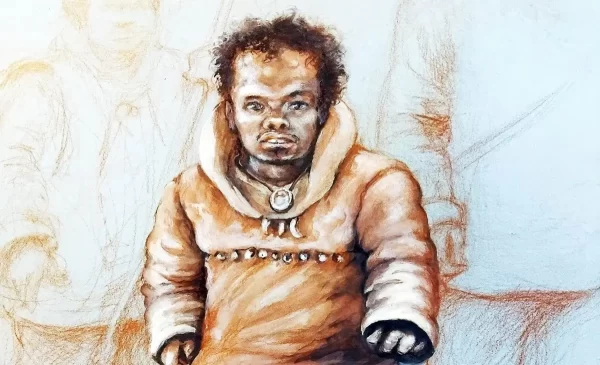 VICTORIA, BRITISH COLUMBIA—According to a statement released by the University of Victoria, Mary Lewis of the University of Reading, April Nowell of the University of Victoria, Jennifer French of the University of Liverpool, and their colleagues looked for evidence of puberty in the remains of 13 Paleolithic individuals who were between the ages of 10 and 20 at the time of death. In particular, the researchers looked at the mineralization of the canine teeth and the maturation of the bones in the hands, elbows, wrists, necks, and pelvis to determine the stage of puberty reached by each individual. “By analyzing specific areas of the skeleton, we inferred things like menstruation and someone’s voice breaking,” Nowell explained. The study suggests that the teens entered puberty by 13.5 years of age, and reached adulthood between 17 and 22 years of age. One of the individuals in the study, known as Romito 2, had a form of dwarfism. It was determined that Romito 2, who is thought to have been male, died mid-way through puberty. The researchers suggest that he would have had a deepened voice, and would have been able to father children, even though he may have had fine facial hair and a youthful appearance. “The specific information about the physical appearance and developmental state of these Ice Age adolescents derived from our puberty study provides a new lens through which to interpret their burials and treatment in death,” French concluded. Read the original scholarly article about this research in Journal of Human Evolution. To read about first-millennium a.d. gold jewelry found in northern Colombia that may have been associated with female puberty, go to “The Pink Standard.”
VICTORIA, BRITISH COLUMBIA—According to a statement released by the University of Victoria, Mary Lewis of the University of Reading, April Nowell of the University of Victoria, Jennifer French of the University of Liverpool, and their colleagues looked for evidence of puberty in the remains of 13 Paleolithic individuals who were between the ages of 10 and 20 at the time of death. In particular, the researchers looked at the mineralization of the canine teeth and the maturation of the bones in the hands, elbows, wrists, necks, and pelvis to determine the stage of puberty reached by each individual. “By analyzing specific areas of the skeleton, we inferred things like menstruation and someone’s voice breaking,” Nowell explained. The study suggests that the teens entered puberty by 13.5 years of age, and reached adulthood between 17 and 22 years of age. One of the individuals in the study, known as Romito 2, had a form of dwarfism. It was determined that Romito 2, who is thought to have been male, died mid-way through puberty. The researchers suggest that he would have had a deepened voice, and would have been able to father children, even though he may have had fine facial hair and a youthful appearance. “The specific information about the physical appearance and developmental state of these Ice Age adolescents derived from our puberty study provides a new lens through which to interpret their burials and treatment in death,” French concluded. Read the original scholarly article about this research in Journal of Human Evolution. To read about first-millennium a.d. gold jewelry found in northern Colombia that may have been associated with female puberty, go to “The Pink Standard.”
Professors Curatolia and Scaria: Dome Architecture and Europe
Professors Curatolia and Scaria: Dome Architecture and Europe
By Dr. Kaveh Farokh
As noted by Professors Curatola and Scarcia a common theory postulates that:
“…domed spaces in Christian buildings in Europe derive from the Armenian model, which, in turn, comes from Sassanian Persia: This can be attributed to geographic proximity and also to the fact that for long periods Armenia was contained within Eranshahr. “ (Curatola & Scarcia, page 92, 2007).
Numerous examples of the earliest church architecture can be seen in Armenia and Iran today:
[Click to Enlarge]Armeno-Sassanian style Domed Christian churches of Armenia (1) Karmravor built in the 7th century (Source: WowArmenia.Com) (2) interior dome at the Echmiadzin Cathedral (original vaulted basilica built in 301-303 AD) (Source: 123RF.com). Iran and Armenia have enjoyed a profound thousands-year long symbiosis at the cultural, linguistic, and artistic-architectural levels – for more see Iran and Caucasia…. (Pictures used in Kaveh Farrokh’’s lectures at the University of British Columbia’s Continuing Studies Division and Stanford University’s WAIS 2006 Critical World Problems Conference Presentations on July 30-31, 2006).
Sassanian Iran was to leave a profound legacy on Romano-Byzantine architecture during its tenure in 224-651 AD.
[Click to Enlarge] The Sarvistan palace built in the 300s AD [1], floor plan of Sarvistan by Nik Spatari [2] reconstruction of Sarvistan by Oscar Reuther, “Sasanian Architecture,” in Survey of Persian Art, Figure 152). [3] the Basilica di S. Marco in Veneziana built in the time period of 1100-1300 AD [4] and floor plan of the Basilica di S. Marco (Pictures used in Kaveh Farrokh’’s lectures at the University of British Columbia’s Continuing Studies Division and Stanford University’s WAIS 2006 Critical World Problems Conference Presentations on July 30-31, 2006; Picture 3 originally posted in Iran Chamber Society). Consult also Spatari, 2003, pp, 270-271, 284-289 (Calabria, L’enigma Delle Arti Asittite: Nella Calabria Ultramediterranea, Author: Nik Spatari, Publisher: Italy: MUSABA, Date: 2003, ISBN: 8887935300).
Armenia, Georgia and the Caucasus in general have undergone a profound cultural synthesis which has spanned for thousands for years. As noted by Professor Mark Whittow of Oxford University:
“The oldest outside influence in Trans-Caucasia is that of Persia (p.203)…many of its populations, including Armenians and Georgians, as well as Persians and Kurds, the Transcaucasus had much closer ties with the former Sassanian world to its south and east than with the world to the west (p.204)”. [Whittow, Mark, The Making of Byzantium: 600-1025, Berkley: University of California Press, p. 203-204].
[Click to Enlarge] Pictures of a Medieval Armenian Church at Goshavank
sent to Kavehfarrokh.com by Professor George Nercessian. This was built on the remains of cyclopean walls, where a Zoroastrian fire temple (Armenian Atrushan =Iranian Atar-Roshan) originally stood. There are many similar sites in Armenia where Churches were built on top of Zoroastrian fire temples (Pictures courtesy of Professor George Narcessian). For more on the topic of Armenian-Zoroastrian fire temples consult CAIS: The Armenian Fire Temple of Ani and Payvand News of Iran: The Northernmost Zoroastrian Fire Temple in the World (in the Republic of Georgia).
Goshavank was named after the 12th century philosopher and theologian Mkhitar Gosh who is buried not far from the Church. “Vank” is Armenian for “Cathedral”, therefore Goshvank can be translated as “Cathedral of Gosh”.
For more on Iran-Caucasus links see: Iran and Caucasia…
The domed architectural style was to attain its own unique style in the Romano-Byzantine Empire, as exemplified by the Holy church of Orthodox Christendom, the Haghia Sophia:
Haghia Sophia (Greek: Sacred Wisdom) Church in modern Istanbul (ancient Constantinople), Turkey.(Source: Turkey Vacation Places)
The site of Haghia Sophia was actually home to three different churches over the centuries. The first was the “Megale Eklesia” (Greek: Great Church) completed by the early 360s but this was completely burnt down and destroyed in the riots of 404. A second church was inaugurated by 415 however this too feel victim to fire in 532 and was destroyed. However, Emperor Justinian I (r. 527-565) ordered a new structure to be built on February 23, 532 – literally just days after the second church had been destroyed. The structure was finally inaugurated in late December 537 with further construction continuing after Justinian’s time.
Note that “Istanbul” is derived from the Greek terms “Es tan Polis” [to the city]. Turkey has done an exemplary job in preserving world heritage Classical sites such as Ephesos, Troy, Cappadocia and Haghia Sophia.
The dome of St Peter’s Basilica in Rome, Italy. This essentially bridged the architectural gap between between the Renaissance and Baroque styles (Source: Rough Guides). The original structure was built in 319-333 and then rebuilt-repaired in the mid-15th century.
For more in Iran-Europe links see: Arthurian and European Culture and Ancient Iran (Eire-An)…
Related posts:
- Lecture: Influence of Sassanian Architecture upon European and Wider Civilization
- Zoroastrian and Mithraic Sites of the Caucasus
- UBC Lecture (November 29, 2019): Civilizational Contacts between Ancient Iran and Europe
- Master Builders: Influence of Sassanid Architecture Reached far Beyond their Borders
- Italian AGON Journal article: Ties of Greco-Roman civilization with ancient Iran
- Nik Spatari: Castle of Ardashir and Rome’s Basilica di Massenzio
- Photos of the Atashgah (Zoroastrian Fire Temple) in Tbilisi, Georgia
- Tehran’s Armenian Church of Saints Teddy and Bartholomew
- The Drafsh Kaviani Emblem and its connections to the European-Gothic Cross
- Kaveh Farrokh Presentation at University of Yerevan November 2013
Kaveh Farrokh Presentation at University of Yerevan November 2013
|February 9th, 2012|Europa and Eire-An (Ancient Iran/Persia), Iran and Europe, Sassanians|
International Day Commemorating the Victims of Acts of Violence Based on Religion or Belief | 22 August
 Freedom of religion or belief, freedom of opinion and expression, the right to peaceful assembly and the right to freedom of association are interdependent, interrelated and mutually reinforcing. They are enshrined in articles 18, 19 and 20 of the Universal Declaration of Human Rights. Upholding these rights plays an important role in the fight against all forms of intolerance and of discrimination based on religion or belief.
Freedom of religion or belief, freedom of opinion and expression, the right to peaceful assembly and the right to freedom of association are interdependent, interrelated and mutually reinforcing. They are enshrined in articles 18, 19 and 20 of the Universal Declaration of Human Rights. Upholding these rights plays an important role in the fight against all forms of intolerance and of discrimination based on religion or belief.
The open, constructive and respectful debate of ideas, as well as interreligious, interfaith and intercultural dialogue, at the local, national, regional and international levels, can play a positive role in combating religious hatred, incitement and violence.
Furthermore, the exercise of the right to freedom of opinion and expression and full respect for the freedom to seek, receive and impart information can play a positive role in strengthening democracy and combating religious intolerance.
Acts of Violence Based on Religion or Belief
There are continuing acts of intolerance and violence based on religion or belief against individuals, including against persons belonging to religious communities and religious minorities around the world, and the number and intensity of such incidents, which are often of a criminal nature and may have international characteristics, are increasing.
That is why the General Assembly adopted the resolution A/RES/73/296, titled “International Day Commemorating the Victims of Acts of Violence Based on Religion or Belief” strongly condemning continuing violence and acts of terrorism targeting individuals, including persons belonging to religious minorities, on the basis of or in the name of religion or belief.
The Member States reaffirmed their unequivocal condemnation of all acts, methods and practices of terrorism and violent extremism conducive to terrorism, in all its forms and manifestations, wherever and by whomsoever committed, regardless of their motivation, and reiterated that terrorism and violent extremism as and when conducive to terrorism, in all its forms and manifestations, cannot and should not be associated with any religion, nationality, civilization or ethnic group.
The General Assembly decided to designate 22 August as the International Day Commemorating the Victims of Acts of Violence Based on Religion or Belief.
The Day comes right after the International Day of Remembrance and Tribute to the Victims of Terrorism, 21 August.
Background
The General Assembly, in its resolution A/RES/73/296, designated 22 August as the International Day Commemorating the Victims of Acts of Violence Based on Religion or Belief recognizing the importance of providing victims of acts of violence based on religion or belief and members of their families with appropriate support and assistance in accordance with applicable law.
It strongly deplored all acts of violence against persons on the basis of their religion or belief, as well as any such acts directed against their homes, businesses, properties, schools, cultural centres or places of worship, as well as all attacks on and in religious places, sites and shrines that are in violation of international law.
A previous resolution establishing the International Day of Remembrance of and Tribute to the Victims of Terrorism (A/RES/72/165) also recognized that working together to enhance the implementation of existing legal regimes that protect individuals against discrimination and hate crimes, increasing interreligious, interfaith and intercultural efforts and expanding human rights education are important first steps in combating incidents of intolerance, discrimination and violence against individuals on the basis of religion or belief.
By proclaiming an International Day Commemorating the Victims of Acts of Violence Based on Religion or Belief, the General Assembly recalled that States have the primary responsibility to promote and protect human rights, including the human rights of persons belonging to religious minorities, including their right to exercise their religion or belief freely.
Could an 11th-century contract prove the existence of same-sex marriage in medieval Spain?
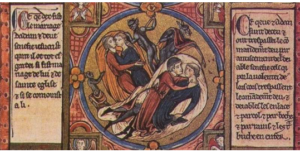 In 1061, two men, Pedro Díaz and Munio Vandilaz, signed a legal agreement in which they undertook to share the management of the house and church of Santa María de Ordes—most likely the current parish of the same name in the Ourense municipality of Rairiz de Veiga, in Northwestern Spain. Judging by their surnames, the men were not relatives but rather, as we will see, friends.
In 1061, two men, Pedro Díaz and Munio Vandilaz, signed a legal agreement in which they undertook to share the management of the house and church of Santa María de Ordes—most likely the current parish of the same name in the Ourense municipality of Rairiz de Veiga, in Northwestern Spain. Judging by their surnames, the men were not relatives but rather, as we will see, friends.
An everyday document
It was also unremarkable that two laymen who were not family decided what to do with assets that, today, we would define as ecclesiastical. Churches and monasteries were often part of the assets of the wealthiest families, who were completely free to decide what to do with them. At this time, the Church also lacked the power or the ability to unilaterally manage all of its material goods.
The text that details the agreement in question is preserved in the cartulary of the monastery of El Salvador de Celanova, one of the most important historical archives of the Hispanic world in the High Middle Ages, with a particularly rich and interesting number of documents. It specifies that both men were equal owners of the church.
It goes on to list the functions they were to share, a fairly standard inventory of the various tasks and duties carried out in the monasteries of early medieval Europe: looking after guests; directing, feeding and clothing servants; cultivating the lands and orchard. Lastly, and perhaps in reference to the horizontal aspirations of monastic societies, it is specified that both men should have the same rights to food, drink and clothing.
‘Throughout all days and nights, forever’
This is the point where the document begins to stray from what might be considered usual. Less usual but not for that reason unusual, since this text still fits within what has come to be defined as artificial kinship, a legal construct that has been documented throughout much of the early medieval European world.
This structure allowed people who were not related to agree to consider one another siblings, in order to defend each other or share property. Shared ownership and management are present in the case of Pedro Díaz and Munio Vandilaz, but it also specifies that this is to be done as “good friends, full of faithfulness and truth, throughout all days and nights, forever.”
This emotional passage, which goes far beyond the simple needs of documenting an agreement, has led some historians to see this as more than just another example of artificial kinship.
The first to open up this avenue of research was the American medievalist John Boswell (1947-1994). In his work “The Marriage of Likeness: Same Sex Unions in Pre-Modern Europe“—which covered same-sex unions from classical antiquity to the Middle Ages—he chose this document as one of those which, according to his hypothesis, concealed a loving, marital union between two men.
Spanish legal historian Eduardo de Hinojosa, who lived between the second half of the 19th century and the beginning of the 20th century, had previously commented on this document as an example of artificial kinship. Hinojosa’s interpretation differed from Boswell’s, which is not surprising, since the academic and cultural standards of his time were not favorable for delving into a history of emotions, sex or homosexuality.
Difficult to define
Boswell’s interpretation has been followed up by other contemporary historians, notably the Galician philologist and historian Carlos Callón. In his work “Amigos e sodomitas,” (“Friends and Sodomites”) this document forms a cornerstone of Callón’s argument regarding the existence of romantic relationships between people of the same sex which were consensual and publicly recognized during the Middle Ages.
Although the task of interpreting the original document is not easy, what is certain is that the Middle Ages are far from the dark, backwards and savage era that some continue to imagine. It is important to remember that in the the Middle Ages there was even homoerotic literature, a fact that reveals a certain permissive attitude and recognition of loving and sexual relations between people of the same sex.
This document may therefore be a factual, non-literary example of a recognized same-sex union during the Medieval period.
https://phys.org/news/2024-08-11th-century-sex-marriage-medieval.html
Stunning Bronze Age burial chamber discovered on the English moor
The stone-lined tomb could provide an unprecedented look at life in Bronze Age England.
Archaeologists excavate the Bronze Age stone tomb in Dartmoor National Park, England. (Image credit: © Alec Collyer)
A “stunning” tomb found on an isolated moor in southwest England could help archaeologists understand what life was like 4,000 years ago in the Bronze Age.
Originally discovered in May, the burial chamber began eroding out of the peat at Dartmoor National Park and was excavated in August, according to a statement from the park. The tomb, which measures about 3.3 feet (1 meter) square, was covered with three large, granite stones. This cist-type burial was likely used around 1800 B.C., based on the radiocarbon dating of charcoal from inside the tomb.
Archaeologists lifted the granite stones and discovered numerous pieces of well-preserved wood, as well as an additional 12 inches (30 centimeters) of fill. The team managed to move the entire tomb to a laboratory, where painstaking micro-excavation will reveal the complete contents of the grave.



